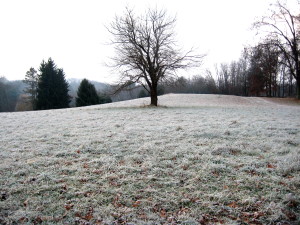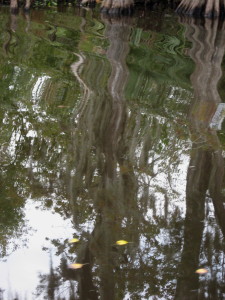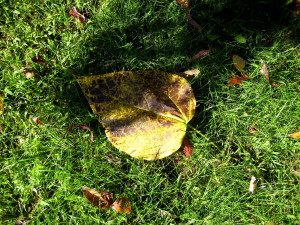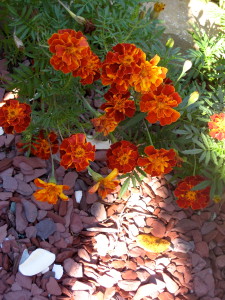
– Photo by Jan Ketchel
I took a deep journey in my physical body, one of whole-body ecstatic movement and release. At a certain point, I became the observer as well as the experiencer—a being in two places at once. As the intensity of rhythmic movement overtook my body, I found myself in the midst of the labor of my own birth, discovering newfound freedom.
After this experience, I noticed the immediate onset of intestinal cramping. The cramping continued throughout the night and into the next day, powerfully dominating my experience. My discomfort was so great that I found respite only in crawling into the fetal pose and breathing deeply, where I finally found astonishing relief.
As the day wore on, my mind got more and more involved. “This must be a stomach virus,” it said. “It’s going around. Or perhaps it’s food poisoning.” Before I knew it, I was googling “irritable bowel syndrome”—the symptoms of which fit perfectly. At that point, my mind began to imprison me in the narrow corridor of rational explanations. I decided, however, to suspend these judgments, as I saw how any one of them would lock me into a known world where I would acquiesce to protocol by constructing a diagnosis and treatment plan, a solid world to frame and resolve my experience in.
I chose instead to stay with the metaphysical thread of a birthing experience that begged for new mastery through a recapitulation process. I know that as a fetus in utero, and at birth, I was impacted by violence. In fact, physical violence to my mother caused my premature birth. What came to me during my experience was the call to ride the waves of the contractions and, in conscious awareness, safely bring my body to shore, to, in fact, re-experience my birth. I did just that, riding the waves all day long, and when night came and I got into bed I set the intent to push my body through the final waves of the process. Incessantly stating my intent to calmly heal and relax, I breathed deeply and, before long, the contractions, most amazingly, subsided.
I was then able to sleep, perhaps for a half hour at a time. I’d awaken and repeat my mantra and deep breathing. Countless times throughout the night I did this and found relief. Eventually, I noticed that I’d awaken in a calm state with no need to restate my intent; the intent having taken over. By morning I was completely healed, delivered by my own intent and acquiescence to the process.
We live in a transpersonal reality, that is, many dimensions or worlds simultaneously. In one world, had I entered it, I suffered food poisoning and could have been treated appropriately. In another world, I suffered the collective stomach flu and could have equally been healed with several days of rest. In another world, I lived through and mastered the trauma of my own birth as I entered this life.
Most instructive to me in this experience was the deeper significance of Carlos Castaneda’s oft-repeated maxim, “Suspend judgment.” With judgments we create constructs, the walls of the world we live in, an all-encompassing world with its own set of rules. When we are able to suspend judgment, however, we can follow the metaphysical thread of an experience into transpersonal worlds, where anything truly is possible!
All things are possible,
Chuck







